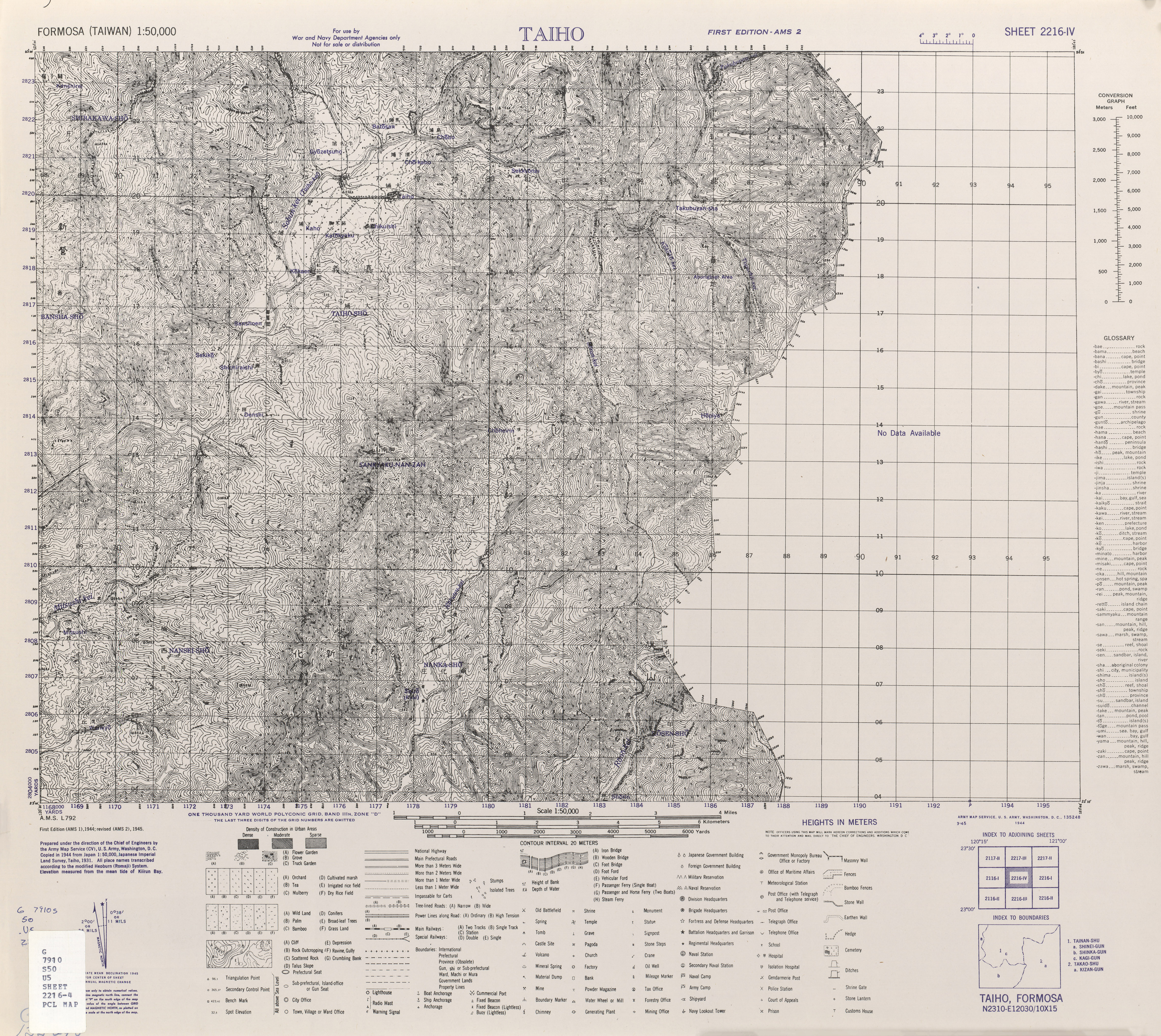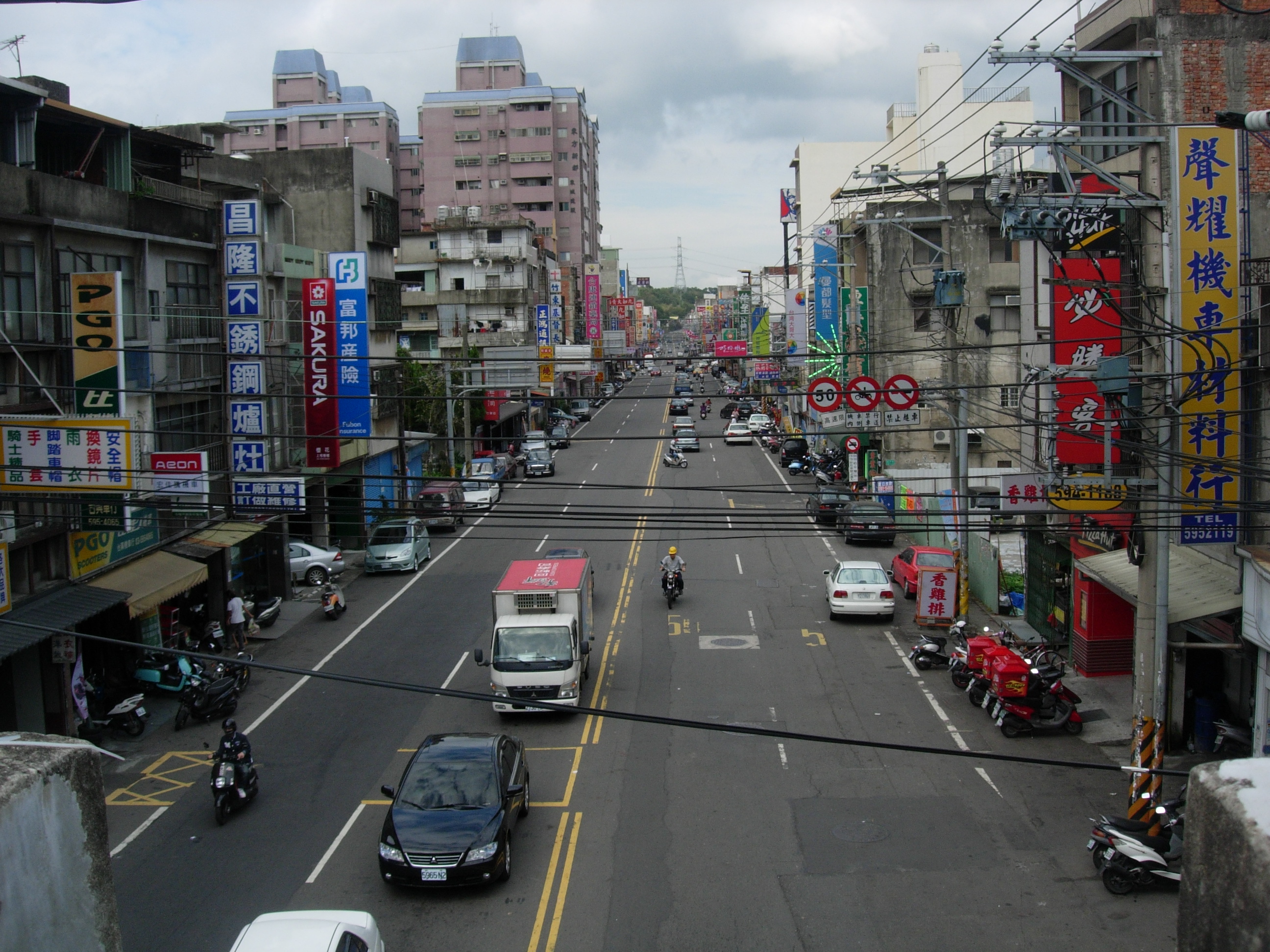|
Dapu, Chiayi
Dapu Township () is a rural township in Chiayi County, Taiwan. Part of the Siraya National Scenic Area, Dapu gets a major portion of its revenue from tourism. Among the birds that can be seen in the area is the fairy pitta. History Human activity is believed to have existed in Dapu since prehistoric times. Artifacts have been found in archaeological sites nearby. The Dutch East India Company started its colonization of Taiwan in 1624. When it established its presence in what is now Chiayi County in 1636, Dapu was a Tsou territory with no recorded Han Chinese activity. According to a 1647 census conducted by the Dutch, Kanakannavo, the tribe that resided in Dapu, contained 37 households (157 residents). Geography The township has an area of 173.2472 km2 with a population of 4,504 people as of May 2022. Administrative divisions The township comprises five villages: Dapu, Heping, Jiadong, Xixing and Yongle. Economy A total of 5.2% of its land is used for agriculture. Tou ... [...More Info...] [...Related Items...] OR: [Wikipedia] [Google] [Baidu] |
Township (Taiwan)
Townships are the third-level administrative subdivisions of counties of the Republic of China (Taiwan), along with county-administered cities. After World War II, the townships were established from the following conversions on the Japanese administrative divisions: Although local laws do not enforce strict standards for classifying them, generally urban townships have a larger population and more business and industry than rural townships, but not to the extent of county-administered cities. Under townships, there is still the village as the fourth or basic level of administration. As of 2022, there are totally 184 townships, including 38 urban townships, 122 rural townships and 24 mountain indigenous townships. 174 townships with 35 urban and 118 rural townships are located in Taiwan Province and 10 townships with 3 urban and 4 rural townships are located in Fujian Province. Penghu and Lienchiang are the only two counties that do not have urban townships. Statistics of ... [...More Info...] [...Related Items...] OR: [Wikipedia] [Google] [Baidu] |
Chiayi County
Chiayi County (Mandarin pinyin: ''jiā yì xiàn''; Hokkien POJ: ''Ka-gī-koān'') is a county in southwestern Taiwan surrounding but not including Chiayi City. It is the sixth largest county in Taiwan. Name The former Chinese placename was Tsu-lo-san (), a representation of the original Formosan-language name ''Tirosen''. A shortened version, Tsulo, was then used to name Tsulo County, which originally covered the underdeveloped northern two-thirds of the island. In 1704, the county seat was moved to Tsulosan, the site of modern-day Chiayi City. Following the 1723 Zhu Yigui rebellion, the county was reduced in size. In 1787, the county and city were renamed ''Chiayi'' (; ) by the Qianlong Emperor to acknowledge the citizens' loyalty during the Lin Shuangwen rebellion. History Qing dynasty Chiayi County was originally part of Zhuluo County during the Qing dynasty. It was given its modern name by the Qianlong Emperor after the Lin Shuangwen rebellion in 1788 for its role in ... [...More Info...] [...Related Items...] OR: [Wikipedia] [Google] [Baidu] |
Taiwan
Taiwan, officially the Republic of China (ROC), is a country in East Asia, at the junction of the East and South China Seas in the northwestern Pacific Ocean, with the People's Republic of China (PRC) to the northwest, Japan to the northeast, and the Philippines to the south. The territories controlled by the ROC consist of 168 islands, with a combined area of . The main island of Taiwan, also known as ''Formosa'', has an area of , with mountain ranges dominating the eastern two-thirds and plains in the western third, where its highly urbanised population is concentrated. The capital, Taipei, forms along with New Taipei City and Keelung the largest metropolitan area of Taiwan. Other major cities include Taoyuan, Taichung, Tainan, and Kaohsiung. With around 23.9 million inhabitants, Taiwan is among the most densely populated countries in the world. Taiwan has been settled for at least 25,000 years. Ancestors of Taiwanese indigenous peoples settled the isla ... [...More Info...] [...Related Items...] OR: [Wikipedia] [Google] [Baidu] |
Siraya National Scenic Area
Siraya National Scenic Area () is the newest of Taiwan's national scenic areas. It was designated by the central government of the Republic of China on 26 November 2005. The scenic area is named after the Siraya people, an indigenous ethnic group that populated this region until well into the 18th century, and whose descendants have intermarried with Han Chinese. The scenic area covers 13 districts/townships: 12 in Tainan City and one, Dapu, in Chiayi County. Among the area's attractions are Zengwun Dam, Wusanto Reservoir, and the coffee plantations of Dongshan. See also * List of national parks in Taiwan * List of tourist attractions in Taiwan Popular tourist attractions in Taiwan include the following: Attractions Historical buildings * Beihai Tunnel, Beigan () * Beihai Tunnel, Nangan () * Daxi Wude Hall () * Ete ... 2005 establishments in Taiwan National scenic areas of Taiwan {{Taiwa ... [...More Info...] [...Related Items...] OR: [Wikipedia] [Google] [Baidu] |
Fairy Pitta
The fairy pitta (''Pitta nympha'') is a small and brightly colored species of passerine bird in the family Pittidae. Its diet mainly consists of earthworms, spiders, insects, slugs, and snails. The fairy pitta breeds in East Asia and migrates south to winter in Southeast Asia. Due to various habitat and anthropogenic disruptions, such as deforestation, wildfire, hunting, trapping, and cage-bird trade, the fairy pitta is rare and the population is declining in most places. Listed on the Convention on International Trade in Endangered Species of Wild Fauna and Flora (CITES) Appendix II, this bird is classified as vulnerable on the IUCN Red List of Threatened Species. Taxonomy The fairy pitta is one of around 14 species in the genus ''Pitta''. Within the genus, it is most closely related to the hooded pitta, with these two species forming a clade that is sister to the blue-winged pitta. The fairy pitta was first described in 1850. It was formerly considered to be conspecifi ... [...More Info...] [...Related Items...] OR: [Wikipedia] [Google] [Baidu] |
Prehistory Of Taiwan
Most information about Taiwan before the arrival of the Dutch East India Company in 1624 comes from archaeological finds throughout the island. The earliest evidence of human habitation dates back 20,000 to 30,000 years, when lower sea levels exposed the Taiwan Strait as a land bridge. Around 5,000 years ago, farmers from the southeast Chinese coast settled on the island. These people are believed to have been speakers of Austronesian languages, which dispersed from Taiwan across the islands of the Pacific and Indian Oceans. The current Taiwanese aborigines are believed to be their descendants. Geographical context The island of Taiwan was formed approximately 4 to 5 million years ago on a complex convergent boundary between the continental Eurasian Plate and the oceanic Philippine Sea Plate. The boundary continues southwards in the Luzon Volcanic Arc, a chain of islands between Taiwan and the Philippine island of Luzon including Green Island and Orchid Island. From the ... [...More Info...] [...Related Items...] OR: [Wikipedia] [Google] [Baidu] |
Dutch East India Company
The United East India Company ( nl, Verenigde Oostindische Compagnie, the VOC) was a chartered company established on the 20th March 1602 by the States General of the Netherlands amalgamating existing companies into the first joint-stock company in the world, granting it a 21-year monopoly to carry out trade activities in Asia. Shares in the company could be bought by any resident of the United Provinces and then subsequently bought and sold in open-air secondary markets (one of which became the Amsterdam Stock Exchange). It is sometimes considered to have been the first multinational corporation. It was a powerful company, possessing quasi-governmental powers, including the ability to wage war, imprison and execute convicts, negotiate treaties, strike its own coins, and establish colonies. They are also known for their international slave trade. Statistically, the VOC eclipsed all of its rivals in the Asia trade. Between 1602 and 1796 the VOC sent almost a million Eur ... [...More Info...] [...Related Items...] OR: [Wikipedia] [Google] [Baidu] |
Tsou People
The Tsou ( Tsou: ''Cou''; ) are an indigenous people of central southern Taiwan. They are an Austronesian ethnic group. They reside in Chiayi County and Nantou County. The Tsou numbered around 6,000, approximately 1.19% of Taiwan's total Indigenous population, making them the seventh-largest indigenous group. They are sometimes confused with the Thao people of Sun Moon Lake. History The Tsou are traditionally based in the Alishan area. Their rich oral histories describe migrations of each ancient clans' ancestors into the area between Yushan and the Chianan Plain. Originally, each clan had its own settlement, with the first multi-clan town, Tfuya, forming approximately 1600 CE. The earliest written record of the Tsou dates from the Dutch occupation, which describes the multi-clan settlement Tfuya as having approximately 300 people in 1647. Ethnologists have attempted to reconstruct the development of Tfuya, proposing that each stage of clan migration could be equivalent ... [...More Info...] [...Related Items...] OR: [Wikipedia] [Google] [Baidu] |
Han Chinese
The Han Chinese () or Han people (), are an East Asian ethnic group native to China. They constitute the world's largest ethnic group, making up about 18% of the global population and consisting of various subgroups speaking distinctive varieties of the Chinese language. The estimated 1.4 billion Han Chinese people, worldwide, are primarily concentrated in the People's Republic of China (including Mainland China, Hong Kong and Macau) where they make up about 92% of the total population. In the Republic of China (Taiwan), they make up about 97% of the population. People of Han Chinese descent also make up around 75% of the total population of Singapore. Originating from Northern China, the Han Chinese trace their cultural ancestry to the Huaxia, the confederation of agricultural tribes living along the Yellow River. This collective Neolithic confederation included agricultural tribes Hua and Xia, hence the name. They settled along the Central Plains around the middle and lo ... [...More Info...] [...Related Items...] OR: [Wikipedia] [Google] [Baidu] |
Dapu Villages (musical instrument) tablature notation into a playable form
{{disambiguation ...
Dapu may refer to: China * Dapu, Hengdong (大浦镇), a town of Hengdong County, Hunan. * Dapu, Liucheng County (), town in Guangxi Province * Dapu, Yixing (), town in Yixing city, Jiangsu Province * Dapu, Yongchun County (), town in Fujian Province * Dabu County (), county of Meizhou City, Guangdong Province Taiwan * Dapu, Chiayi (), township in Chiayi County, Taiwan Other * Dapu incident (2010), an eminent domain case in Zhunan, Miaoli, Taiwan * ''Dapu'' (), the process of transcribing old Guqin The ''guqin'' (; ) is a plucked seven-string Chinese musical instrument. It has been played since ancient times, and has traditionally been favoured by scholars and literati as an instrument of great subtlety and refinement, as highlighted b ... [...More Info...] [...Related Items...] OR: [Wikipedia] [Google] [Baidu] |
Zengwen Reservoir
Zengwen Dam, also spelled Tsengwen Dam, () is a major earthen dam in Dapu Township, Chiayi County, Taiwan on the Zengwen River. It is the third tallest dam in Taiwan, and forms Zengwen Reservoir (曾文水庫), the biggest reservoir in Taiwan by volume. The dam stores water for irrigation of the Chianan Plain, Taiwan's most productive agricultural region, and provides flood control along the Zengwen River which flows through Tainan City. The dam supports a 50 megawatt hydroelectric power station. History Chianan irrigation project The first proposals for the dam were made as early as the 1930s during the Japanese occupation of Taiwan. The Japanese had built the Chianan Irrigation system to increase Taiwan's agricultural output, which was supplied primarily by the Zengwen River. Because the Zengwen River does not cross the area of the Chianan Plain to be irrigated, a tunnel had to be punched through mountains to divert Zengwen water into the Guantian River. Between 1920 and ... [...More Info...] [...Related Items...] OR: [Wikipedia] [Google] [Baidu] |





%2C_Hoorn.jpg)
